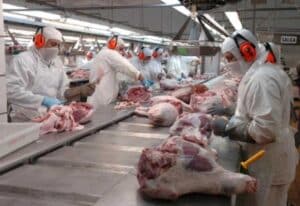Of all existing animal proteins, pork is the most consumed worldwide. Even though it is not part of the diet of a significant portion of the population for religious reasons – mainly Muslims, Hindus, Jews and Adventists – in 2018, pork meat accounted for 42.9% of world consumption.
Chicken was 34.6% and beef 22.5%. The data is from DEPEC – Bradesco’s Department of Research and Economic Studies, with data from the United States Department of Agriculture (USDA), in a survey released in 2019.

swine production
In that year, in all, the world produced 117 million tons of protein. Of this volume, Brazil participated with 3.75 million tons.
The country is now the fourth largest producer and exporter of protein in the world, behind only China, the European Union and the United States.
For the USDA, in release of its latest projections, pork production in 2020 will increase by 3.5%, driven by record export demands, which will rise to 15% this year.
But a new factor also leverages the swine farming in the country: change in Brazilian taste (and table)
Brazilian pork consumption
The average national consumption is around 15.6 kg/per capita/year, according to DEPEC. Although it is similar to the global one, it is far from the volume consumed by China and Hong Kong, or even the European Union. In these places, according to data from the National Pork Board in 2015, consumption exceeded 40 kg/year per person.
In the United States and Russia, major producers and exporters of protein, consumption is 29.2 kg/year and 21.2 kg/year, respectively.
According to data from the Associação Brasileira de Proteína Animal, domestic consumption is increasing: in 1996 it was 11.6, rising to 15.1 in 2016, reaching the current 15.6 kg/year.
Even so, pork protein is the third most preferred by Brazilians. Chicken is the most consumed (42 kg/year per capita), and beef is in second place (30.7 kg/year per capita).
For the board of the Federation of Agriculture and Livestock of the State of Santa Catarina (FAESC), a set of factors still made this protein an unpopular product for the Brazilian consumer. One is the climate issue. Countries with colder climates tend to consume more pork.
Another point is culture. This explains why in Santa Catarina, strong in the swine industry, protein consumption is above the country's average, with something around 24 kg/year per person.
But perhaps the main factor, for the Federation, is prejudice. For a long time, pork consumption was associated with obesity and disease.


